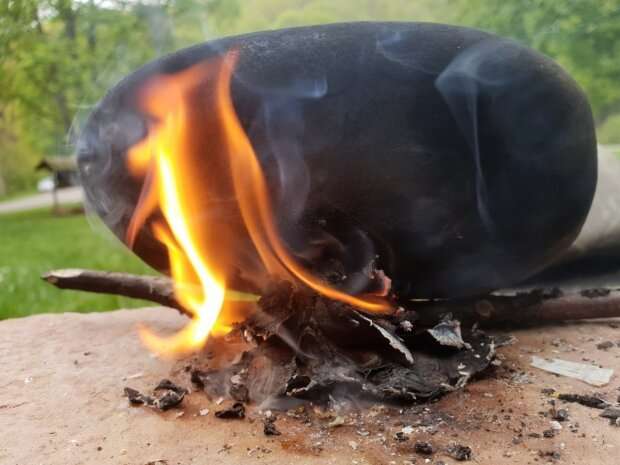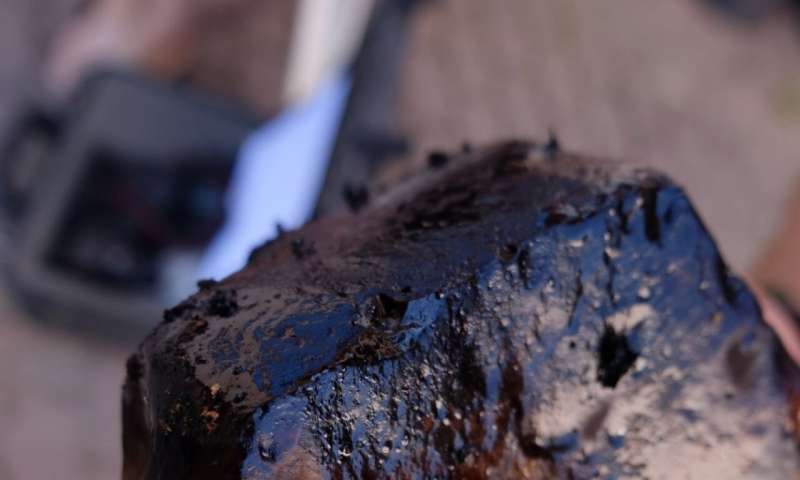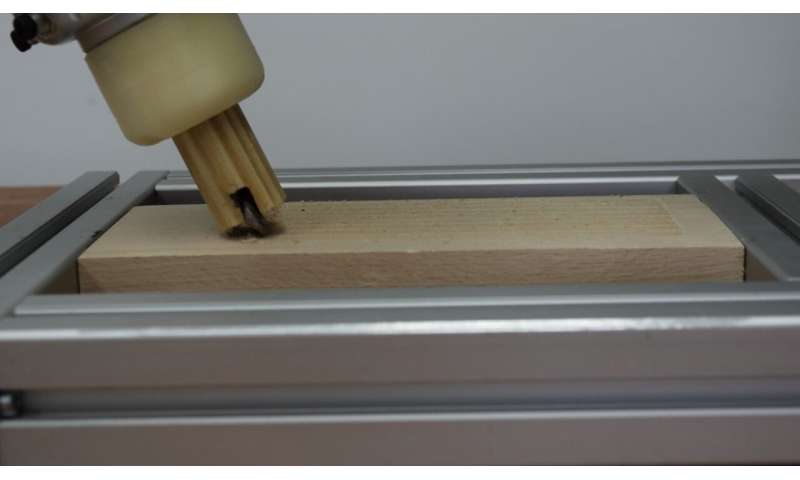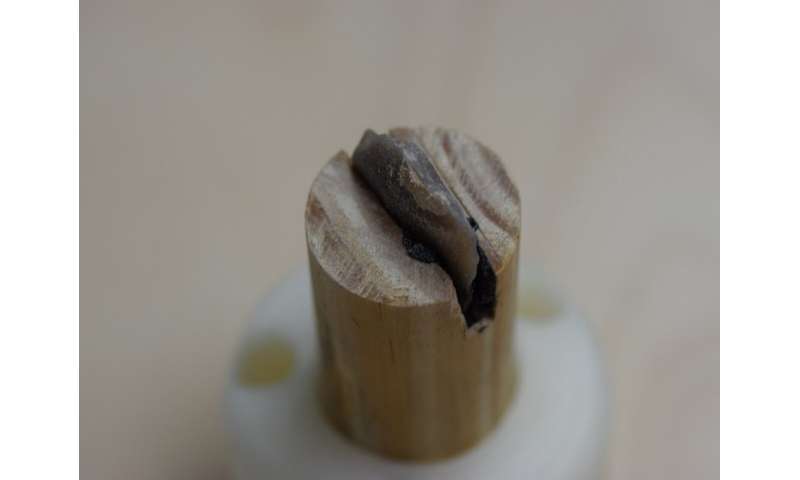
Neanderthals and other early humans produced a tarry glue from birch bark; this was long considered proof of a high level of cognitive and cultural development. Researchers had long believed that birch tar—used by the Neanderthals to make tools—could only be created through a complex process in which the bark had to be heated in the absence of air.
However, an international team led by researchers at the University of Tübingen and including faculty from New York University's Department of Anthropology and the NYU Tandon School of Engineering found that there is a very simple way to make this useful glue.
The study was published August 19 in Proceedings of the National Academy of Sciences (PNAS).
"Our paper challenges common beliefs that the presence of birch tar in Neanderthal archaeological assemblages means they had sophisticated cognitive abilities," said co-author Radu Iovita, a paleoanthropologist and Paleolithic archaeologist in the Department of Anthropology at NYU and a member of the faculty of the Department of Early Prehistory and Quaternary Ecology at the University of Tübingen.
Prior researchers had experimented with pits, clay structures, ash mounds, and metal and ceramic vessels as means to heat the bark in the absence of oxygen. Instead, this research team experimented with ordinary materials available in the Stone Age. They collected cut fresh birch bark or dead bark in the forest and burned it near flat river stones. After three hours, the process yielded a usable amount of a black sticky material. The tar could easily be scraped off the surface of the stones. Its molecular characteristics were similar to archaeological samples from Neanderthal sites and, more important, it formed a stronger glue than tar produced in more complex oxygen-free processes.

The team used their adhesive to make a wood-scraping tool and turned to a robot that used force-control technology developed by Ludovic Righetti and Johannes Pfleging.
Righetti is an associate professor in the Electrical and Computer Engineering and the Mechanical and Aerospace Engineering Departments at NYU Tandon and a senior researcher at the Max-Planck Institute for Intelligent Systems in Tübingen. Pfleging is a visiting scholar of anthropology at NYU and a doctoral student in robotics at the Federal Institute of Technology (ETH) in Zürich, Switzerland.
Their robot arm dragged the tool with a precision that humans cannot emulate over 170 strokes. The approach also allowed the researchers to measure the effects with precision: The tool showed no weakening of the adhesive bond.

In another test, the researchers used the adhesive to stick a stone scraper to a wooden handle, as the Neanderthals had done. Iovita was able to scrape the tough outer membrane from the thigh bone of a calf.
The researchers say this method of making birch tar is so simple that early humans could have easily discovered it by accident in the course of their everyday activities. The production and use of birch tar can therefore no longer serve as an indicator of modern or complex behavior.

"Birch tar extraction does not prove Neanderthal behavioral complexity," appears in PNAS – Proceedings of the National Academy of Sciences, week of August 19, 2019.
Explore further
Citation: Neanderthal tool-making process may have been simpler than previously thought (2019, August 20) retrieved 20 August 2019 from https://phys.org/news/2019-08-neanderthal-tool-making-simpler-previously-thought.html
This document is subject to copyright. Apart from any fair dealing for the purpose of private study or research, no part may be reproduced without the written permission. The content is provided for information purposes only.
https://phys.org/news/2019-08-neanderthal-tool-making-simpler-previously-thought.html
2019-08-20 11:01:10Z
CAIiEDl7WozlIHgWgKRZOoWZqxsqFwgEKg8IACoHCAowpbDpAzCm_hwwj9kp
Bagikan Berita Ini














0 Response to "Neanderthal tool-making process may have been simpler than previously thought - Phys.org"
Post a Comment